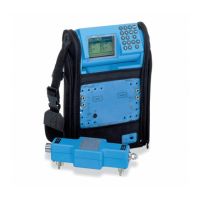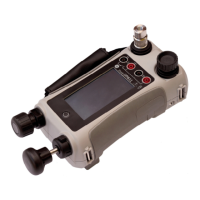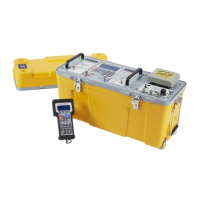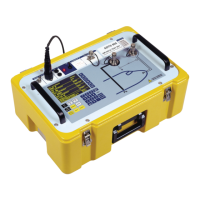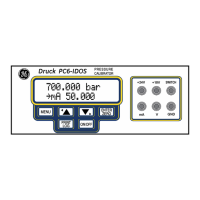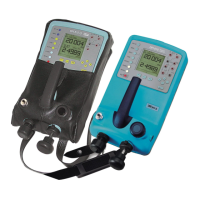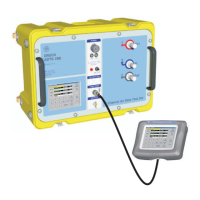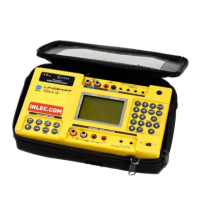
Do you have a question about the GE Druck TRX-II and is the answer not in the manual?
| Operating Temperature | -10°C to +50°C |
|---|---|
| Display | LCD |
| Measurement Range | Pressure |
| Output Channels | mA, V |
| Input Channels | Pressure |
| Communication Interface | RS232 |
| Storage Temperature | -20°C to +70°C |
| Pressure Media | Non-corrosive fluids and gases compatible with 316 stainless steel |
Provides an introduction to the user manual for the Druck TRX-II and TRX-II IS Multi-function Calibrator.
Lists essential safety warnings for operating the TRX-II calibrator, including handling hazardous areas.
Describes the TRX-II calibrator's design for testing/calibration and its measurement/sourcing capabilities.
Lists standard accessories provided with the TRX-II and optional accessories for expanded functionality.
Identifies and describes the physical parts, connectors, and interfaces of the TRX-II calibrator.
Explains the different screen displays and the functions of the keypad for operating the TRX-II.
Details the distinct operational modes for measuring and sourcing signals, including simultaneous functions.
Guides on storing and recalling key-pad operations to automate frequently used functions.
Explains how to install and use both alkaline and rechargeable batteries, with important handling notes.
Provides instructions for recharging batteries, maintenance, and replacement for optimal battery performance.
Guides users on setting the display language and configuring the real-time clock for accurate logging.
Details how to change temperature units (°C/°F) and select from various pressure units for readings.
Covers setting an access code for protected menus and configuring system options like backlight and key repeat.
Explains how to measure DC voltage and current signals using the TRX-II calibrator.
Details procedures for measuring resistance, frequency, and using the pulse counter mode.
Describes how to test switch contact positions and continuity using the TRX-II.
Guides on measuring thermocouple signals, including compensation wire usage and cold junction compensation.
Explains how to measure Resistance Temperature Detector (RTD) signals, including wiring and excitation current.
Details the connection, preparation, and general notes for operating the TRX-II with pressure sensors.
Describes the process of calibrating pressure switches using the TRX-II calibrator.
Explains how to set up scaled readings for linear and flow relationships, displaying measurements in engineering units.
Details how to source DC voltage and current signals, including setting levels and using specific terminals.
Explains how to simulate resistance values and source frequency signals with the TRX-II.
Describes the pulse source functions and the counter mode for pulse counting.
Guides on simulating temperature signals for various thermocouple types using the calibrator.
Explains how to simulate temperature signals for Resistance Temperature Detector (RTD) types.
Details how to use the step mode for generating signals in programmable or fixed divisions.
Explains setting up and operating the automatic ramp mode for linear signal increase/decrease over time.
Guides on calibrating transmitters, comparing measured and sourced readings, and checking transmitter characteristics.
Explains how to simulate transmitter signals (e.g., 4-20 mA) based on temperature inputs.
Details setting up the signal converter for various input/output signal conversions and specific I/P converter usage.
Explains how the TRX-II handles electromagnetic disturbances and the resulting error messages.
Provides specific instructions and precautions for using the TRX-II IS model in potentially explosive atmospheres.
Details battery charging procedures, maintenance, and replacement for the intrinsically safe TRX-II IS model.
Lists detailed specifications for electrical measurement and sourcing functions, including ranges, resolution, and accuracy.
Provides detailed specifications for temperature measurement and sourcing, covering RTDs and thermocouples.
Outlines the steps for recalibrating the TRX-II, including cold junction compensation and general calibration notes.
Details the process of installing new pressure sensors and performing their calibration for accurate readings.
Covers procedures for fault finding, cleaning, and safely accessing the calibrator's housing.
Lists various spare parts for the TRX-II calibrator with their corresponding part numbers for ordering.
Enumerates special functions like step mode, ramp, scaling, and signal conversion for enhanced utility.
Details accuracy figures, resolution errors, and sources of cold junction error for precise measurements.
Lists optional pressure sensors by type (Gauge, Absolute, Differential), their ranges, and part numbers for selection.
Provides detailed specifications for standard pressure sensors, including reference, calibration, and operating conditions.
Specifies the serial port settings for RS232 communication integration with the TRX-II calibrator.
Outlines the steps for returning an unserviceable unit for repair, including required information and procedures.
Advises on safety precautions, warranty implications of unauthorized service, and how to find approved service agents.

